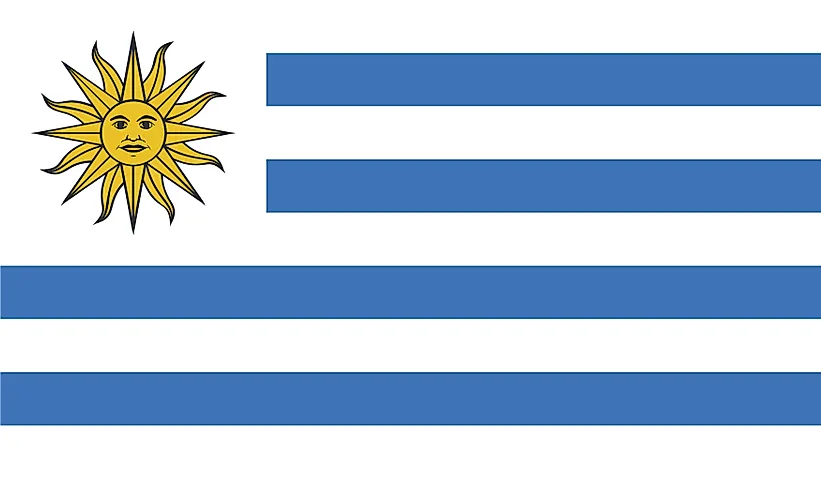
Uruguay
| Continent | Americas |
| Capital | Montevideo |
| Population | 3,351,016 |
| GDP | $73.25 Billion |
| GDP per Capita | $20,300 |
| Dialing Code | +598 |
| ISO Code (2-letter) | UY |
| ISO Code (3-letter) | URY |
Uruguay Landscapes






About Uruguay
# Uruguay: Gateway to South America
Welcome to Uruguay, a nation of progressive values and natural beauty. With approximately 3.5 million people across 176,215 square kilometers, Uruguay combines social innovation with cultural richness, standing as one of South America’s most stable and developed nations.
Geographic Features and Natural Beauty
Uruguay’s geography encompasses gentle landscapes and extensive coastlines. The country features rolling plains (pampas), numerous rivers including the Uruguay River, and 660 kilometers of Atlantic coastline.
The landscape includes grasslands, palm groves, and sandy beaches. The country’s varied terrain creates diverse ecosystems supporting unique wildlife and bird species.
Protected areas include various national parks and coastal reserves. The country’s commitment to conservation focuses on preserving its grasslands and coastal ecosystems while promoting sustainable development.
Cultural Heritage and Traditions
Uruguayan culture represents a sophisticated blend of European influences and local traditions. The country’s heritage includes gaucho culture, distinctive music like candombe (UNESCO Intangible Cultural Heritage), and passionate football tradition.
Traditional arts include tango music, murga carnival performances, and mate drinking customs. Cultural practices feature carnival celebrations, traditional asados (barbecues), and the preservation of gaucho traditions.
Uruguayan cuisine reflects its cattle-ranching heritage, featuring dishes like chivito, asado, and dulce de leche. The tradition of sharing mate (yerba mate tea) remains central to social life.
Historical Journey
Uruguay’s history spans from indigenous settlements through colonial period to progressive democracy. The country emerged as a buffer state between Brazil and Argentina.
Significant periods include colonial era, independence struggles, early 20th century reforms under José Batlle y Ordóñez, and return to democracy in 1985. The country’s progressive social policies have earned it the nickname “Switzerland of South America.”
Modern Economic Landscape
Today’s Uruguayan economy focuses on agriculture, services, and renewable energy. The country is known for its high-quality beef exports and sustainable energy practices.
Recent initiatives emphasize digital transformation, green energy development, and sustainable agriculture. Uruguay’s educated workforce and social stability support its economic development.
International Relations and Global Position
Uruguay maintains active participation in South American organizations while fostering global partnerships. The country’s stability and progressive policies extend its diplomatic influence.
Did You Know?
• Uruguay was the first country to fully legalize marijuana?
• The country generates nearly 100% of its electricity from renewable sources?
• Uruguay has one of the highest literacy rates in South America?
• The first FIFA World Cup was held in Uruguay in 1930?
Conclusion
Uruguay represents a unique combination of social progress and natural charm. From its rolling pampas to its vibrant cities, from its traditional customs to its progressive policies, Uruguay continues to evolve while preserving its cultural heritage. As it addresses challenges including economic diversification and environmental protection, Uruguay remains committed to progress while maintaining its position as a model of social development in South America.